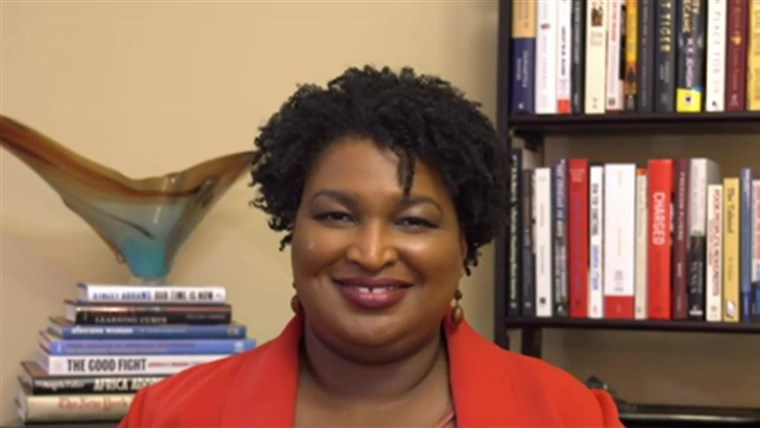In the last few weeks, Joe Biden has led President Donald Trump by a fairly consistent 8-point average in national polls and has maintained leads in more than enough battleground states to win the Electoral College, including Arizona, Michigan, Pennsylvania and Wisconsin — all states Trump won in 2016.
But there are signs Trump’s ground operation is paying off when it comes to registering new voters in key states, an advantage that could become important if the race tightens before Nov. 3.
The Trump campaign has boasted that it knocks on more than a million doors a week, a claim that’s impossible to independently verify. In sharp contrast, the Biden campaign had ditched a ground game for virtual outreach, citing Covid-19 concerns — even though academic research has routinely concluded door-to-door canvassing is the “most consistently effective and efficient method of voter mobilization.” Only just now has the Biden campaign decided to restart its in-person voter contacts in some battleground states.
As deadlines approach, new data from the past few months shows Republicans have swamped Democrats in adding new voters to the rolls, a dramatic GOP improvement over 2016, even if new registrations have lagged 2016 rates across the board. It’s a sign that in a pandemic, Democrats are struggling to seize traditional opportunities to pad their margins, such as the return of students to college campuses.
Of the six states Trump won by less than 5 points in 2016, four — Arizona, Florida, North Carolina and Pennsylvania — permit voters to register by party. In all four states, voter registration trends are more robust for the GOP than four years ago.
In Florida, Republicans added a net 195,652 registered voters between this March’s presidential primary and the end of August, while Democrats added 98,362 and other voters increased 69,848. During the same period in 2016, Republicans added a net 182,983 registrants, Democrats 163,571 and others 71,982. In 2016, Trump prevailed in Florida by just 112,911 votes.
Even in heavily blue Miami-Dade County, where Hillary Clinton beat Trump by 29 points in 2016, Republicans added a net 22,986 additional voter registrations between March and the end of August, compared to 11,142 for Democrats.
In Pennsylvania, Republicans added a net 135,619 voters between this June’s primary and the final week of September, while Democrats added 57,985 and other voters increased 49,995. Between the April 2016 primary and the November 2016 general election, Republicans added 175,016 registrants, Democrats added 155,269 and others 118,989. That fall, Trump won the state by just 44,292 votes.
The pro-GOP trend since 2016 is also apparent, if less dramatic, in Arizona and North Carolina, two Sun Belt states Democrats have high hopes of flipping blue.
In North Carolina, Republicans added a net 83,785 voters between this March’s presidential primary and the final week of September, while Democrats added 38,137 and other voters jumped 100,256. During the same period in 2016, Republicans added 54,157 registrants, Democrats added 38,931 and others 140,868. In 2016, Trump carried North Carolina by 173,315 votes.
In Arizona, Democrats out-registered Republicans 31,139 to 29,667 on a net basis between the March presidential primary and the August state primary, compared to Democrats topping Republicans 66,523 to 53,185 over the same period in 2016. This data doesn’t include new registrations from late August or September, and Arizona’s registration deadline is Oct. 5.
To be sure, it can be hazardous to draw broad conclusions from voter registration statistics. For example, the youngest voters both overwhelmingly dislike Trump and increasingly choose not to affiliate with either major party.
And in Florida, North Carolina and Pennsylvania, Republicans have steadily been closing the registration gap for years as older, rural and conservative voters who used to affiliate as Democrats either die or formally switch their registrations to the GOP. In each of these states, several counties that voted strongly for Trump still have overwhelming Democratic voter registration advantages.
But privately, several Democratic strategists are deeply disturbed by their party’s failure to keep pace with its registration successes in 2016 and fault the Biden campaign’s lack of in-person outreach for the lag.
The Trump campaign is well aware of the opportunity it has to expand its core demographic base through registration and mobilization: in 2016, there were 2.4 million eligible whites without college degrees who didn’t vote in Pennsylvania; 2.2 million in Florida, 1.6 million in Michigan and 872,000 in Wisconsin, according to estimates compiled by the Cook Political Report.
Today, Trump’s voter registration edge alone wouldn’t be nearly sufficient to offset the leads Biden is posting in polls of Michigan, Pennsylvania, Wisconsin and probably Arizona. But if the race tightens or there’s a substantial polling error, Trump’s superior base growth could make a difference in a few tight states — and call into question why the Biden campaign chose to forgo hitting the streets.



